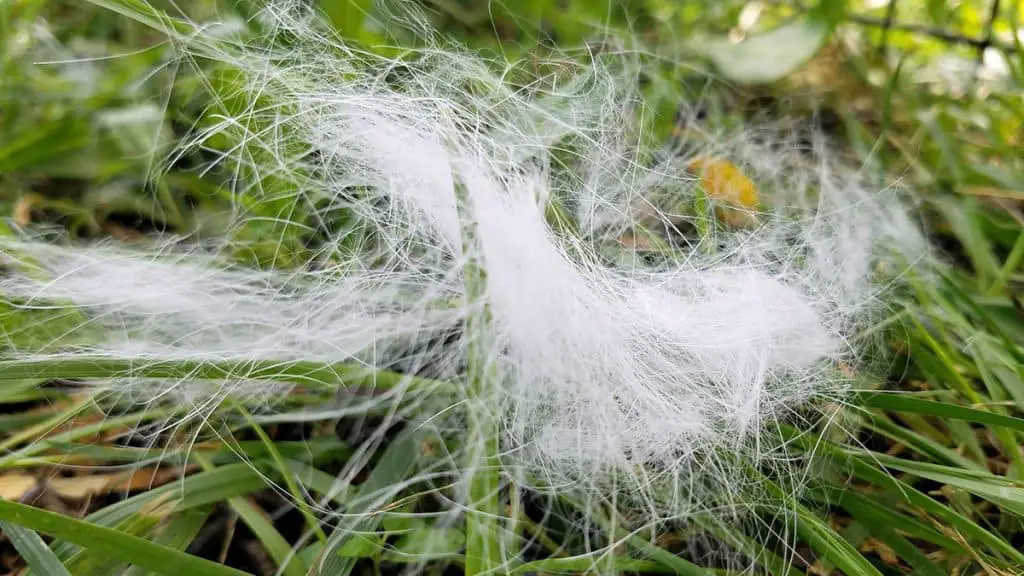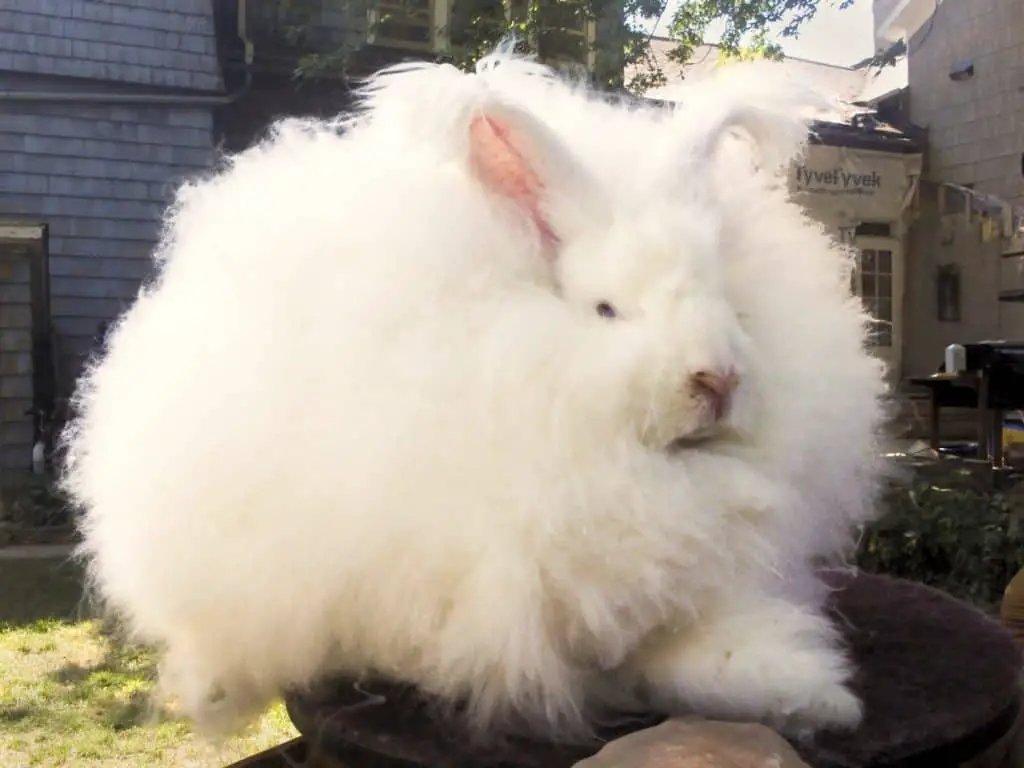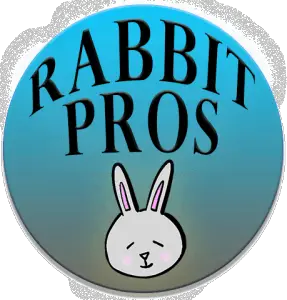Disclosure: We may earn money or products from the companies mentioned in this post.

If you are considering getting a pet rabbit, you have to be asking yourself if all bunnies shed. In this article we’ll dig into the details of how rabbits shed.
All rabbits shed hair in a process called molting. Adult rabbits usually molt two to four times a year. The heavest shedding happens in the spring and the fall. Over a period of a few weeks, a rabbit will shed old hair while new hair replaces it. The new hair will be of appropriate weight and density for the upcoming season. Young rabbits will molt their baby hair for adult hair when they are about 5 months old.
Some molts are heavier with hair seemingly everywhere, and others moltings are so light that you might not even notice them.
During a heavy molt, the amount of hair they are losing can be alarming. As you pick up your bunny, you might even be left with a full hand of fur! When this happens, it’s usually 100% healthy and natural.
If your rabbit is losing lots of hair, also referred to as “blowing their coat”, just take a few moments to look closely at their skin. As long as the skin doesn’t look inflamed or infected, it’s just the natural transition from an old coat of fur to a new one.
There are a number of issues that might cause excessive shedding or issues with the whole molting process, but we’ll cover those in a bit. First, let’s just get the basics down.
Do All Bunnies Shed
All rabbits molt their hair two to four times a year. There are no breeds of rabbits that do not shed hair, though some people believe that Angora rabbits shed the least.
Personally, I think that angoras shed less because they are normally kept as fiber producers (for wool and yarn), and because of that their hair is usually routinely combed.
The hair shed by some rabbits will be less noticeable if it’s shorter in length, less curly, or of a color that matches their surroundings.

Why Do Rabbits Shed?
Rabbits shed to ensure that they have healthy coats of fur for the upcoming season. For example, they need shorter and less dense fur in the summer and warmer coats in the winter.
Do Bunny Rabbits Shed Year All Year Round?
Rabbits do not shed their coats year-round. Instead, rabbits shed two to four times a year. These periodic sheddings are referred to as molting and each one will last a couple of weeks. If you brush them daily during those molting times, the shedding will be much less noticeable and bothersome.
A rabbit’s first molting will happen as they move from adolescence to adulthood. This takes place at roughly 18 to 24 weeks of age. At the end of this teenage molting, know has an adult coat and will molt two to four times a year.
After that teenage molt, your rabbit will molt roughly once a quarter (about every three months). However, the ‘seasonal molts’ are much more dramatic as your rabbit prepares for a major change in the weather.
Many sources will go so far to even say that rabbits only shed twice a year, but that’s simply not the case. Just because those non-seasonal molts are not as messy, doesn’t mean that they’re not happening.
Rabbits shed most in the spring, which is when the heaviest molt happens at the end of winter. This makes sense because your bunny is going to be getting rid of her heavy winter coat in preparation for the warmer days to come.
The other heavy time for shedding is at the end of summer when your rabbit goes into overdrive to get rid of her cooler summer coat and replace it with a winter-ready fur coat.
Still, there are ways that you can help your rabbit through its molt more quickly and efficiently, but first let’s talk about the normal pattern of a molting rabbit so you can recognize when things are not going as quickly as they could.
Rabbit Patchy Shedding
There is a natural pattern that a rabbit follows when molting which can give a rabbit a patchy fur coat. Rabbits begin to molt on their heads, then the shedding moves down their neck, to their stomach, and then to the back haunches. This whole process takes 2 to 4 weeks, and this timeline is primarily dependent upon the season and the breed of rabbit.
Now let’s talk about how we can move that shedding window closer to the 2-week period than the 4-week timeframe.

How to Reduce Rabbit Shedding
Since you can’t stop your bunny rabbit’s natural molting pattern, you need to focus on helping your bunny get through the process as quickly as possible. Thankfully, there is a tried and true thing that you can do to help shedding go easily.
Comb Your Bunny Regularly To Reduce Shedding
Combing your bunny during heavy molting is the #1 thing that you can do to help your bunny get through the shedding process most quickly, and is also the #1 thing that you can do to help avoid the most common ‘complication’ in the molting process.
When your bunny is in a heavy molting cycle, as the University of Miami Biology Department outlines, their natural instinct is to groom, groom, and groom some more.
The natural outcome of licking at all of this loose fur is that they will ingest lots of that fur. While rabbits don’t typically get fur-balls the way that cats do (with the exception of the longest hair breeds of rabbits), swallowing so much hair will cause some problems passing all of that hair as waste and can make your pet bunny really uncomfortable.
Reducing the amount of fur that your bunny rabbit swallows is the best well to help it avoid this problem, and the best way to reduce the amount of fur is to comb your rabbit at least daily during a molt.
Other ways to help your bunny avoid molt related intestinal issues include:
- A High Fiber Diet, helps your bunny pass the hair. During the molt, give your bunny free access to hay and supplement with fresh greens and grass.
- Plenty of water. Being fully hydrated helps your bunny pass all that hair. Never let your rabbit run out of water, but it’s even more important to keep clean and fresh water available to your bunny when they are heavily shedding.
- In addition to combing, Dana Krempels, Ph.D. of the University of Miami recommends a “Wet Hand Rubdown” for your bunny. “To do this, Moisten your hands & gently rub the bunny backward and forward over the entire length of the body. In doing so, the loose fur will stick to your moist hands and form a thick felt sheet. To remove the felt sheet, simply rub your hands together to make a roll, throw it away (or compost it!), and repeat the procedure until your bunny’s loose fur is mostly removed.”
Conclusion
Shedding is a natural and unavoidable part of having a pet bunny. But knowing what to expect and how to deal with makes it much easier.
If you have other tips for your fellow bunny lovers, please leave them in the comments below!
